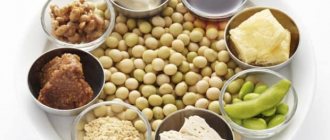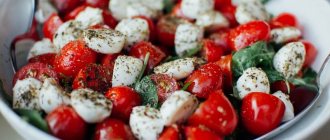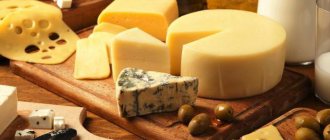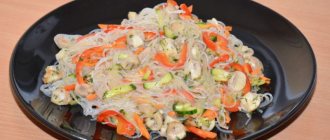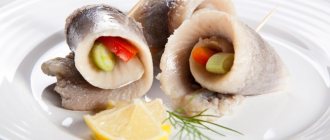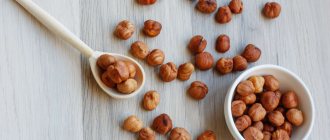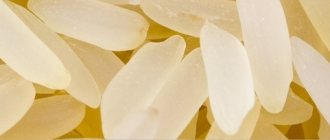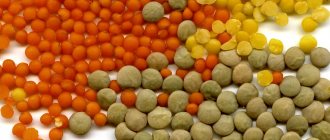- September 4, 2018
- Sports nutrition
- Fed Menshagina
Soy protein isolate is a dietary supplement for daily diets requiring variety or protein supplementation.
Due to the fact that soybeans are a relative of the legume family - peas, beans, peanuts, chickpeas, the protein value of these tasteless fruits is just as high. Soybeans are especially rich in protein, vitamins, flavonoids and minerals. When cooked with other vegetables, soybeans add flavor and add nutritional value to the dish.
Soybean cultivation
China is considered the historical homeland of soybeans, where it has been grown since the 11th century BC. For a long time, the legume plant was almost the only product of Chinese peasants. To this day, soybeans are used to make the main dishes known from Japanese restaurants - fermented soybean soup - misso, odorless tofu cheese and aromatic soy sauce. Not a single meal in East Asian countries is complete without these dishes.
Until the 18th century in Europe, soybeans were only studied, demonstrated at exhibitions, and used as a valuable supplement, mixed with grain feed, for poultry. Soybeans under the name “oil peas” were brought to Russia by breeding scientists at the end of the 19th century. Its beneficial and nutritional properties were presented to the general public, and soybeans began to spread from the Podolsk province throughout Russia. The cultivation of the Asian protein crop experienced a lull, due to a lack of understanding of the conditions for its mass cultivation, and then a strong flourishing (in 1930), facilitated by the scientist N.I. Vavilov.
Soybeans are most widely used in America. Perhaps, partly thanks to President B. Franklin, who sent it to the famous American botanist from England, partly thanks to its cultivation for industrial oil by Henry Ford. Be that as it may, today soybean plantations occupy 40% of the world's sown area in the United States and the first place among all legumes in the world.
In Japan, the government encourages farmers to grow soybeans as well as rice because of the high profitability of soybean production. If we compare the protein content of soybean, its nutritional capacity with the meat equivalent and grain, it turns out that soybean exceeds the nutritional value of the first by 5 times, and by 3.5 times of the second.
Why is soy so rich?
In terms of protein and fat content, soybeans are the leaders among absolutely all products of plant origin. After the process of extracting fat from fruits, protein makes up 50% or more of the remaining nutrient content. The same corn, wheat, barley, millet contain 10-12% extracted protein.
Even in comparison with the most protein-containing meat - beef, soy wins in protein proportions. Beef contains 145 g of protein and 135 g of fat per kg. Accordingly, 1 kg of soybean seeds contains 400 g of protein and 200 g of fat.
In addition to proteins, soy contains nature’s essential microelements and vitamins, which form the basis of metabolic processes in the body. The most important are vitamins D, B, biodigestible iron, potassium, calcium, fiber - for intestinal motility, vitamin E - an antioxidant, lecithins (participants in cell renewal), fatty acids - life extenders, isoflavonoids - anti-carcinogens.
Soy protein in bodybuilding[edit | edit code]
In order not to be unfounded, we present the latest research data:
To gain weight:
Phillips SM and colleagues in 2009 compared the anabolic properties of milk (whey and casein) and soy protein. The analysis data clearly showed that milk protein stimulated muscle growth significantly more than soy protein.[1] A 2009 paper by Tang JE, Moore DR found that the stimulation of muscle growth in young adults was greater when consuming whey protein than soy protein.[2] Although a 2007 Douglas Kalman study found no differences in effectiveness.[3]
Conclusion: Whey supplements are better for muscle growth because they have a stronger evidence base.
To burn fat:
When studying the benefits of different types of protein during weight loss, data were obtained: the thermogenic effect is higher when consuming whey protein (14.4 ± 0.5%), followed by casein (12.0 ± 0.6%) and in last place soy protein (11.6 ± 0.5%). Whey peptides have the greatest ability to increase the rate of fat oxidation. Despite the fact that soy is digested at an average rate, it causes almost the same rise in insulin levels as whey, which is an additional negative fact for burning fat.[4]
Veldhorst MA in 2009 in his experiment came to the conclusion that whey protein is more effective in suppressing hunger compared to soy protein.[5]
So, it is clear that soy is not the preferred choice for fat loss. casein as a slow source of amino acids
, or complex additives.
Soy protein isolate - who is it good for?
Athletes' diets must be rich in good quality proteins for highly effective training. If you refuse regular food prepared in vegetable oils by frying or grilling, the body cannot obtain the proteins necessary for building muscle mass. Therefore, a source of healthy protein is necessary, and positive reviews of soy protein isolate play an important role in its selection. In this regard, soybeans are excellent as sports nutrition, with a high protein-containing structure of the grain. Soy isolate, from which fat and carbohydrates are excluded, contains up to 90% protein.
This nutritional content of the diet is ideal for a sports diet for those training, for the formation of a sculpted “lean” figure, for diabetics, vegetarians, and people with lactose allergies.
Benefits of Soy Protein
Despite the existing disadvantages, soy protein has undeniable advantages:
- Low cost. The average price of 1 kg of soy protein usually does not exceed $3;
- Regulates hormonal levels in women;
- There is no lactose, so consuming soy protein does not cause gastrointestinal irritation;
- Contains fiber, which helps normalize the digestive process;
- Improves kidney function;
- Normalizes blood sugar levels and thyroid function;
- Promotes the production of thyroid hormones that burn fat.
It is an ideal source with a complete set of amino acids for vegetarians; it replaces animal proteins.
In addition, it is suitable for people suffering from lactose intolerance. Helps satisfy hunger without harm to health, does not contain excess fats and carbohydrates. It is quickly absorbed and does not cause digestive problems.
Composition of soy isolate
- The leading component of soy isolate is protein, the content of which reaches up to 90% of the total seed. Fat in the isolate is less than 1%, moisture and ash (minerals) less than 6-7%, fiber 0.05-4.00%.
- The amino acid composition of soy isolate is incomplete, as in any vegetable protein, but in its biological value it surpasses even animal protein.
- Useful nutrients in soy protein isolate: iron, nickel, aluminum, iodine, boron, manganese, cobalt, molybdenum.
- Nutrients: magnesium, sodium, phosphorus, sulfur, potassium, calcium, silicon, polyunsaturated fatty acids, vitamins B, D, E.
Calorie content of soy isolate. Chemical composition and nutritional value.
Nutritional value and chemical composition of soy isolate.
The table shows the nutritional content (calories, proteins, fats, carbohydrates, vitamins and minerals) per 100 grams of edible portion.
| Nutrient | Quantity | Norm** | % of the norm in 100 g | % of the norm in 100 kcal | 100% normal |
| Calorie content | 360 kcal | 1684 kcal | 21.4% | 5.9% | 468 g |
| Squirrels | 92 g | 76 g | 121.1% | 33.6% | 83 g |
| Fats | 0.5 g | 56 g | 0.9% | 0.3% | 11200 g |
| Carbohydrates | 1 g | 219 g | 0.5% | 0.1% | 21900 g |
| Alimentary fiber | 5.6 g | 20 g | 28% | 7.8% | 357 g |
| Water | 4.98 g | 2273 g | 0.2% | 0.1% | 45643 g |
| Ash | 3.58 g | ~ | |||
| Vitamins | |||||
| Vitamin B1, thiamine | 0.176 mg | 1.5 mg | 11.7% | 3.3% | 852 g |
| Vitamin B2, riboflavin | 0.1 mg | 1.8 mg | 5.6% | 1.6% | 1800 g |
| Vitamin B4, choline | 190.9 mg | 500 mg | 38.2% | 10.6% | 262 g |
| Vitamin B5, pantothenic | 0.06 mg | 5 mg | 1.2% | 0.3% | 8333 g |
| Vitamin B6, pyridoxine | 0.1 mg | 2 mg | 5% | 1.4% | 2000 g |
| Vitamin B9, folates | 176 mcg | 400 mcg | 44% | 12.2% | 227 g |
| Vitamin RR, NE | 1.438 mg | 20 mg | 7.2% | 2% | 1391 g |
| Macronutrients | |||||
| Potassium, K | 81 mg | 2500 mg | 3.2% | 0.9% | 3086 g |
| Calcium, Ca | 178 mg | 1000 mg | 17.8% | 4.9% | 562 g |
| Magnesium, Mg | 39 mg | 400 mg | 9.8% | 2.7% | 1026 g |
| Sodium, Na | 1005 mg | 1300 mg | 77.3% | 21.5% | 129 g |
| Phosphorus, P | 776 mg | 800 mg | 97% | 26.9% | 103 g |
| Microelements | |||||
| Iron, Fe | 14.5 mg | 18 mg | 80.6% | 22.4% | 124 g |
| Manganese, Mn | 1.493 mg | 2 mg | 74.7% | 20.8% | 134 g |
| Copper, Cu | 1599 mcg | 1000 mcg | 159.9% | 44.4% | 63 g |
| Selenium, Se | 0.8 mcg | 55 mcg | 1.5% | 0.4% | 6875 g |
| Zinc, Zn | 4.03 mg | 12 mg | 33.6% | 9.3% | 298 g |
| Essential amino acids | |||||
| Arginine* | 6.67 g | ~ | |||
| Valin | 4.098 g | ~ | |||
| Histidine* | 2.303 g | ~ | |||
| Isoleucine | 4.253 g | ~ | |||
| Leucine | 4.253 g | ~ | |||
| Lysine | 5.327 g | ~ | |||
| Methionine | 1.13 g | ~ | |||
| Threonine | 3.137 g | ~ | |||
| Tryptophan | 1.116 g | ~ | |||
| Phenylalanine | 4.593 g | ~ | |||
| Nonessential amino acids | |||||
| Alanin | 3.589 g | ~ | |||
| Aspartic acid | 10.203 g | ~ | |||
| Glycine | 3.603 g | ~ | |||
| Glutamic acid | 17.452 g | ~ | |||
| Proline | 4.96 g | ~ | |||
| Serin | 4.593 g | ~ | |||
| Tyrosine | 3.222 g | ~ | |||
| Cysteine | 1.046 g | ~ | |||
| Saturated fatty acids | |||||
| Saturated fatty acids | 0.4 g | max 18.7 g | |||
| 14:0 Miristinovaya | 0.008 g | ~ | |||
| 16:0 Palmitinaya | 0.31 g | ~ | |||
| 18:0 Stearic | 0.104 g | ~ | |||
| Monounsaturated fatty acids | 0.645 g | min 16.8 g | 3.8% | 1.1% | |
| 16:1 Palmitoleic | 0.008 g | ~ | |||
| 18:1 Oleic (omega-9) | 0.637 g | ~ | |||
| Polyunsaturated fatty acids | 1.648 g | from 11.2 to 20.6 g | 14.7% | 4.1% | |
| 18:2 Linolevaya | 0.195 g | ~ | |||
| 18:3 Linolenic | 0.195 g | ~ | |||
| Omega-3 fatty acids | 0.2 g | from 0.9 to 3.7 g | 22.2% | 6.2% | |
| Omega-6 fatty acids | 1.5 g | from 4.7 to 16.8 g | 31.9% | 8.9% |
The energy value of soy isolate is 360 kcal.
Primary Source: Created in the application by the user. Read more.
** This table shows the average levels of vitamins and minerals for an adult. If you want to know the norms taking into account your gender, age and other factors, then use the “My Healthy Diet” application.
Disadvantages of Soy Isolate
- Soy protein is digested slightly slower than whey isolate. The rate of absorption may slow down due to rougher processing. Problems may arise in the form of flatulence and frequent bowel movements.
- The biological value of soy protein is lower than animal protein, so it is important to maintain a normal balanced protein regime in the diet.
- Soy protein contains compounds of the female hormone estrogen, which can indirectly cause hormonal dysfunction of sex hormones in both men and women. Thus, soy protein isolate can cause harm to the body.
In view of these disadvantages, it is recommended to strictly adhere to the consumption regimen of soy isolate and start with small doses.
Cons of Soy Protein
In addition to its low biological value, soy protein has a number of other disadvantages, which is why bodybuilders avoid it like fake steroids. One of the reasons for the low BC of soy protein is the lack of the sulfur-containing acid methionine. Sulfur-containing amino acids (including cysteine) play a particularly important role in protein synthesis and the normal functioning of the immune system, as well as the production of glutathione.
Glutathione (GTT) is one of the most important antioxidants in the body. It protects cells and detoxifies a number of harmful compounds, such as hydrogen peroxide, carcinogens, reactive oxygen species, etc. In particular, glutathione is partially responsible for preventing the oxidation of low-density lipoprotein (bad cholesterol).
A number of studies have shown that soy protein is less effective than whey protein in producing GTT and benefiting the immune system. Although soy protein has been reported to lower cholesterol levels in humans and animals, in one study, when soy protein, not fortified with methionine at 13% of total calories, was administered to rats, there was an increase in cholesterol levels and the likelihood of lipoprotein cholesterol peroxidation low density. Thus, in rats, not only cholesterol levels increased, but also the process of oxidation of the LDL fraction was simplified, which can lead to atherosclerosis. Low levels of GTT were detected in experimental rats. Additionally, compared to another group of rats fed casein, the soy group experienced growth retardation.
If that's not enough to convince you to give up soy protein, it's even worse. Soy proteins contain components that interfere with the digestion and absorption of many different nutrients. The two most important antinutrients found in soy are lectins and protease inhibitors.
Lectins are dangerous elements in plants that lead to problems ranging from impaired absorption of important nutrients to damage to the gastrointestinal tract. Proteases are enzymes involved in the digestion of proteins. Soy contains several protease inhibitors that interfere with the function of the enzymes trypsin and chymotrypsin. Both of these substances play an important role in the digestion and absorption of proteins in the gastrointestinal tract.
Finally, soy is rich in estrogenic compounds like genistein and diadzein. There are more than 300 phytoestrogens, which vary significantly in their physiological effects and activity in humans and animals. As every bodybuilder knows, changing the testosterone/estrogen ratio in favor of estrogen leads to increased body fat and other adverse effects that hinder the achievement of strength athletes' goals.
Benefits of Isolate
Despite the above disadvantages, the benefits of soy protein isolate are very high and undeniable.
- Isolate helps reduce excess weight by saturating the body with proteins and nutrients, replacing unhealthy high-calorie daytime snacks and dinner.
- Ideal as sports nutrition for those training in gyms.
- Thanks to its biochemical properties, soy protein contributes to a qualitative improvement in the functioning of the entire body - the gastrointestinal tract, nervous system, hematopoiesis, hormonal balance, and physical activity.
- Suitable for lactose intolerant (milk carbohydrate) people with lactose allergies.
- Soy isolate is an excellent nutritional component for vegetarians.
How to take soy protein for weight gain
Professional and aspiring vegetarian athletes, whose diet is completely free of animal products, should take about 3-4 servings per day to compensate for the deficiency of amino acids.
On training days, take 4 servings:
- The first is after breakfast.
- The second is after training.
- The third is after lunch.
- Fourth - instead of a snack and dinner, no later than 19.00.
The powder is mixed with water or juice.
How to take Soy Isolate Soy Protein? Reviews
Soy isolate is sold in sports nutrition stores in powder form, in large jars with a measuring spoon.
To prepare a drink from soy isolate, you need to dissolve 30 g of powder in 250 ml of water, juice, skim milk or kefir. It is undesirable to dissolve the isolate in hot liquid, otherwise the protein will coagulate and the drink will lose its nutritional value. To increase the calorie content of the drink, you can add dried fruits - nuts, raisins, figs. How to take soy protein isolate? According to reviews, it is recommended to drink the drink up to 4 times a day - before training, physical activity and after it. Isolate is absorbed more slowly than whey protein drink, but faster than milk protein.
For those who are in weight loss mode, judging by the clear reviews, soy protein isolate can replace 1-2 meals, for example, an afternoon snack and dinner. You can make a breakfast with a scoop of isolate, oatmeal, a glass of water, canned peaches or pineapple.
If the purpose of consuming isolate is to supplement protein in the diet, then replacing meals with isolate is not recommended. The isolate in this case is used as a valuable food additive. That's what the reviews say.
Recommendations for the use of soy isolate
If you are interested in how to take the supplement, you should first understand the issue of daily dosage. Typically, athletes are recommended to calculate it based on the fact that for every kilogram of body weight there should be from 0.86 to 1.5 grams of product. Bodybuilders can increase the dose to 2 grams. During active training, the dosage can be increased to 3 grams per kilogram. The total dose is divided into 3-4 doses.
In the instructions, manufacturers may indicate that 30 grams of the product should be consumed at one time, stirring it in 200 ml of water or juice. This is the optimal, standard dosage, which is suitable for any athlete, if you do not make individual calculations.
Also, when understanding how to take soy isolate, you should pay attention to the time of administration. It is recommended to drink it a couple of hours before the start of a workout and immediately after its completion. It will be effective to take before bed and after waking up, when there is a “protein window”. A personal trainer can also recommend an individual dosage regimen, if necessary.
To ensure that protein can be well absorbed by the body, you should not mix the supplement with other sports nutrition products. You can drink them only after a couple of hours, when all the beneficial substances from the isolate have already been absorbed.
Important! The supplement is used not only for the purpose of building muscle mass, but also for losing weight. It reduces hunger, allowing you to reduce calorie intake. At the same time, the burning of adipose tissue is stimulated, thereby releasing the energy necessary for training. You should drink isolate for weight loss before meals, approximately 30-60 minutes.
The storage conditions for the product are indicated by the manufacturer on the packaging. They must be observed very carefully, especially in relation to permissible humidity. The additive is offered in powder form, so excessive moisture may change its original properties. After the expiration date, you should not drink protein.
Can children eat soy isolate?
Soy isolate is used in the production of infant formula for ages “from zero to one year”. Such compositions are enriched in production with an additional complex of vitamins and minerals for children.
When choosing a mixture, parents, after reading reviews of soy isolate, doubt the content of GMOs in it - transgenic soybeans, into which an agricultural bacterium that is resistant to weeds is added during cultivation. The effects of transgenic soybeans on the human body have not been fully studied. But it is important to know that the use of genetically modified soybeans for the production of infant formula is prohibited in Russia.
Genetically modified food sources (GMPS) are allowed in many countries, including Russia. However, manufacturers of such products are required to indicate their presence on the packaging. If the GMIP content in a product is more than 5%, this is mandatory indicated on product packaging in our country, Japan, Australia, and in the EEC countries, labeling is mandatory even with a 0.9% GMIP content in the product. In the USA, Canada and Argentina, the use of GMIP in all products without labeling is permitted, which must be taken into account when choosing mixtures.
Manufacturers of soy isolate do not recommend the use of this product, purchased in specialized sports nutrition stores, for children under 16 years of age. But, if you believe the reviews, soy protein isolate can be given to children in an amount equal to the child’s normal daily milk consumption, no more.
The use of soy isolate in sports
Soy protein is considered sports nutrition. Soybean isolate is taken by training athletes to give a lean body shape during competition. Bodybuilders choose soy isolate because of its maximum protein content and relative cheapness. Ideally, isolate is taken in a proportion of 1 g per 1 kg of body weight per day. During average training - 1.7 g per 1 kg of weight, in the pre-competition period - 2 g of dry isolate per 1 kg of weight. 3 times a day. The first is after waking up, the second is between breakfast and lunch and the third is before bed.
During the period of using soy isolate protein, you need to balance the amount of proteins, carbohydrates, and fats absorbed in your normal diet. Protein comes in the form of a supplement, but the diet should also contain meat, eggs, fish, and dairy products. If there is no increase in body weight, then it is necessary to add complex carbohydrates to the diet in the form of cereals, potatoes, pasta, beans or lentils.
Soy isolate for weight loss
Isolate powder or ready-made vegetable milk is used. Prepare smoothies, cocktails or raw porridges with soy isolate. Consume instead of breakfast and dinner or as a snack. When losing weight with soy isolate, it is very important to review your usual diet and significantly reduce your intake of carbohydrates and fats. Only in this case, a diet that includes soy isolate will help you lose unnecessary pounds. When losing weight, the daily intake of soy isolate should not exceed 60 g. What is the best dish that uses soy protein? This is porridge.
Porridges for weight loss are prepared on the basis of isolate (25 g) diluted in water, with the addition of raw oatmeal, rice, buckwheat flakes and chopped nuts - walnuts, almonds, cashews, Brazil. You can use fresh juice instead of water. It turns out to be a balanced breakfast that really energizes you for the entire time until a full lunch.
Descriptions of recipes with soy protein isolate emphasize the use of only cool water or milk for preparation, or perhaps lukewarm. In hot water, the isolate will lose its protein value.
How to use?
Having decided what you need soy protein isolate for, all that remains is to figure out how to take it. First, the body's daily protein requirement is calculated taking into account body weight and fat percentage. Calculate how much protein you consume from natural foods to find out how much extra you should be getting.
How much should I take?
On average, male athletes are recommended 1.5-2 g of protein per kilogram of body weight for men and about 30% less for women. Since soy isolate has a poor amino acid composition, it must be drunk in large dosages - approximately doubled.
Typically, people weighing 70-90 kg consume 20-25 g of protein at a time, diluting it in 200-250 ml of water.
On the day of training
On a training day, the first portion of a mixture based on soy isolate should be drunk in the morning half an hour after breakfast. Do not drink the cocktail on an empty stomach, so as not to slow down the digestion process and reduce its efficiency.
A second serving can be had at midday with some carbohydrates, and another shake can be made 15-20 minutes after training.
On a day of rest
On rest days between workouts in the gym, taking soy protein isolate is recommended even more often - up to four times:
- First serving in the morning after breakfast.
- The second one is also at noon.
- The third after dinner.
- The last increased dose is half an hour before bedtime.
Recipes with soy isolate
Depending on your goals, you can consume soy protein isolate in the form of cocktails, read several recipes below:
- To increase calorie content when gaining muscle mass, you can prepare soy protein with milk or yogurt instead of water, adding one banana and a handful of berries, crushed in a blender.
- Try using soy protein isolate for weight loss as a low-calorie breakfast: 200-250 ml of skim milk, 20-25 g of protein, 100-150 g of dry oatmeal. Grind everything with a blender and drink.
Delicious and healthy drinks made from soy isolate
The smoothie is easy to prepare in a blender. Take ready-made milk or dilute the isolate in water, add kiwi, strawberries and beat until foam forms. For a fruit protein smoothie, you can use any sweet forest berries - blueberries, blueberries, currants, blackberries.
Cocktails are prepared based on isolate diluted in water or juice, with the addition of banana or strawberries, mint and stevia - a vegetable sweetener. As a sweetener, you can use concentrated syrups - pomegranate, rosehip, berry. Mix the isolate diluted in water with soy milk, stevia or syrup in a blender. The result is a delicious drink, similar to children's Nesquik.
As a basis for diluting isolate powder, you can use low-fat kefir, yogurt, and other low-calorie dairy products, if you are not allergic to lactose.
Gourmets will love this bitter cocktail based on ready-made milk with the addition of a teaspoon of chopped ginger root and red pepper.
Soy Isolate Baking Recipes
Recipes made from soy protein isolate are incredibly varied, the dishes taste amazing and are harmless to your figure. Fewer ingredients are needed than if regular flour were used. For example, for pancakes or pancakes, 15-30 grams is enough for an entire plate of fluffy pancakes, due to the fact that the baked goods increase in size due to the protein. You can make ice cream, pancakes, cakes, cutlets, rolls, and puree soups. Below are some sweet recipes based on soy isolate and protein reviews.
Protein cupcakes. You will need 2 tbsp. spoons of low-fat cottage cheese, 2 yolks, a teaspoon of vegetable oil and the same amount of baking powder, sweetener to taste. Knead by adding beaten egg whites. Sift 2 tbsp. spoons of isolate and the same amount of bran. Mix well and pour into molds. Bake for 20-30 minutes in the oven at 180 degrees.
Soy pancakes. Mix 2 eggs with skimmed milk powder (6 tablespoons), add sweetener to taste, 30 g soy isolate. Mix everything in a blender and bake without oil.
Protein flatbreads. Mix 3 tbsp in one bowl. spoons of oat bran with 3 eggs, 30 g of soy isolate, add low-fat kefir to the consistency of the pancake composition, a pinch of soda, add vanilla, sweetener and leave for half an hour for the bran to swell. Bake without oil.
Reviews of soy protein isolate
For vegetarians, soy protein extract, judging by the reviews, is ideal. Soybean dishes dominate their daily diet. This is not only pastries and cocktails, but also main courses, soups with the addition of other vegetables.
Athletes and bodybuilders have mixed reviews of soy isolate. Those who train every day and need a balanced protein diet note that to get the greatest muscle benefits, you need to choose high quality protein, that is, with high levels of nitrogen, which is essential for metabolism during training. Soy isolate loses in this regard to whey protein, but given the high protein content in soy isolate, it can be diluted with whey concentrate - then the balance of muscle nutrition and a sufficient amount of protein for muscle growth will be stabilized.
